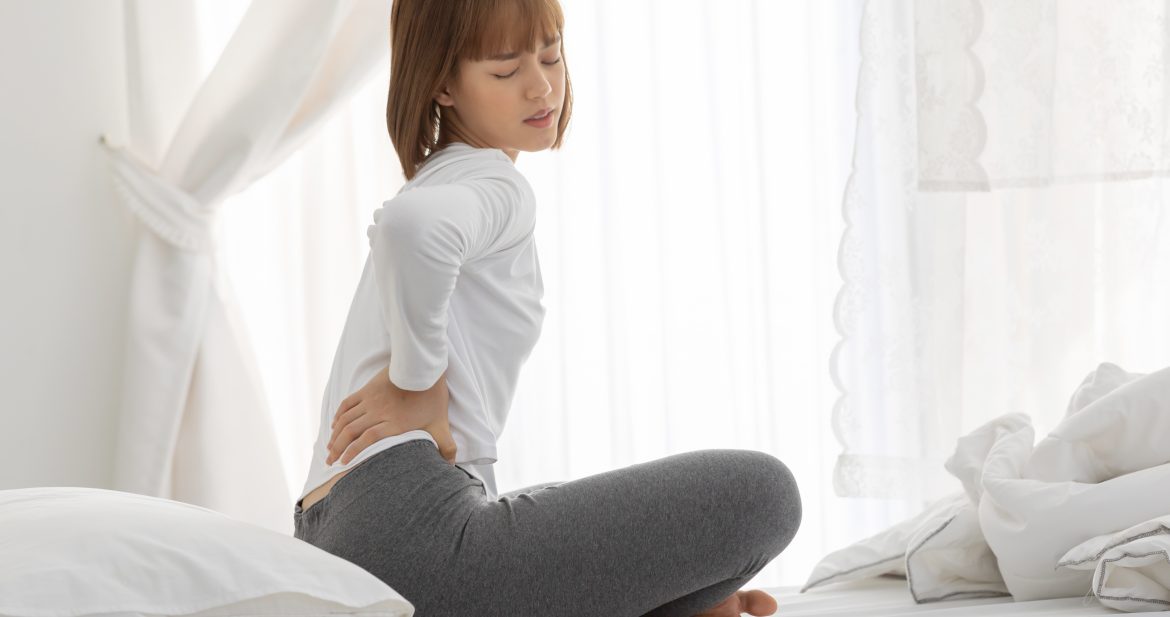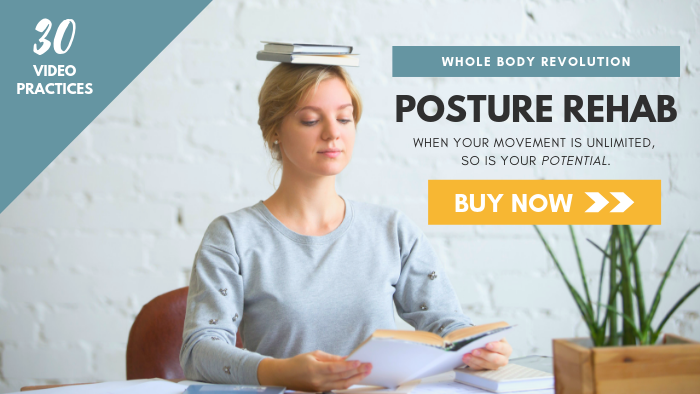It’s the worst…
It seems like you just laid down to go to sleep but already your alarm is going off.
Groggy, you reach over, smack the snooze button and wrench yourself up to sitting — only to cringe as your back cramps.
Maybe it’ll be better when I get moving, you think, standing up only to find that you can’t quite straighten your spine and you’re walking like you’re 90 years old.
This getting older thing isn’t for the faint of heart, you might think.
But wait…
You know you don’t have to suffer with early morning aches and pains, right?
Waking up with a stiff back doesn’t have to be your ordinary.
Here are four things you can do to improve the health of your back, both when you wake up with pain and stiffness as well as preventative measures to keep them from coming back:
Start with Reducing Inflammation
Have you ever heard of systemic inflammation? It’s where your body’s inflammatory response gets out of control and basically bakes your muscles like an oven.
It’s at the root of a lot of disorders like diabetes and heart disease, but it also makes your muscles ache.
So, reducing systemic inflammation is the first thing I’d recommend for someone who wakes up with a stiff back — especially if it happens frequently.
There are lots of ways to treat systemic inflammation. Some require dietary changes like eliminating pro-inflammatory foods. Others look at healing your damaged gut lining. And there are many more, all of which are worth exploring.
But my favorite first line of defense is:
Magnesium.
Magnesium is anti-inflammatory, and it’s also a natural muscle relaxer.
(Professional note: check with your doc before adding or changing any supplements to your routine.)
Magnesium not only relaxes tight muscles. It’s required for your muscles to release tension.
As in:
If you don’t have enough magnesium on board, your muscles physically cannot relax. Magnesium is the “fuel” that powers the release of tension.
It’s also very calming for the nervous system, which helps you handle stress better. Less stress equals less tension, which means less waking up with a stiff back in the morning.
#winning
There are various ways to get magnesium into your body. For immediate relief of a localized area (like your back) I really like topical magnesium. This is a gel, lotion or spray that you put on your skin and allow to absorb into your muscles.
For ongoing, whole body supplementation, my two favorite forms are magnesium glycinate and magnesium threonate.
You can find my current selection of preferred magnesium products on my resources page.
And for a deeper look at how magnesium can benefit virtually every aspect of your health from muscle pain to depression, head over here to download my free digital guide to magnesium supplementation.
I created this after the fifty-gazillionth time I talked to a client about considering magnesium and realized how few people know about the benefits of this magical mineral!
Then, Move Your Joints
Stretching is nice, but you know where you’ll get better bang for your movement buck?
In your joints.
Joints are rich in cells that communicate information — including pain signals — to your brain. They also need a steady flow of synovial fluid (basically your body’s WD-40) to keep them lubricated.
Moving your joints stimulates all the little cells that sense motion and drowns out pain signals. It also warms up and spreads the synovial fluid across the joint surface.
Both effects are great for those times when you wake up with a stiff back.
But how do you do it?
I cover dynamic joint mobility in depth in my Posture Rehab program. The concept is fairly simple. A basic cat cow from yoga will do. You can also do hip circles (as though you were hula hooping) or do pelvic tilts (tipping your hips forward and backward) if you want to get the overachiever’s badge.
But in the case of a stiff back, a nice, gentle cat cow will be of great benefit.
Of course, never move into pain. If this makes your back worse, stop immediately and consult a professional who can assess your specific situation. You certainly don’t want to aggravate some underlying condition.
Then Stretch Your Hips and Lower Back
Now that your joints are all loosey-goosey, it’s time to stretch those muscles.
In the case of a stiff back, I find it very helpful to incorporate stretches that also target your hips. If your hip joint is tight, then the muscles of your lower back will work overtime to compensate.
Which is why my Posture Rehab program focuses on a holistic, whole-body approach to restructuring your posture — not just treating the symptoms of pain. Working related areas of the body in addition to painful areas is a much longer lasting solution than just spot treating painful symptoms.
The easiest lower back stretch that targets both of these areas is this:
(Click here for a video tutorial of this stretch as well as the cat cow mentioned above.)
Sit on the floor with your legs straight out in front of you.
Cross your right leg over your left, placing your foot flat on the floor and hugging your right knee to your chest.
You will feel a stretch in the back of your hip.
To increase the stretch and target your lower back, place your left arm on the outside of your right knee and twist your torso to the right.
Hold for ten seconds or more (I like to stay in stretches for thirty seconds to a minute, but use your best judgement). Then, switch and stretch the other side.
And Finally Decompress Your Spine
Have you ever heard of your psoas?
It’s a deep core muscle that spans your abdomen from the solar plexus down to the top of your thigh bone.
It runs behind all your internal organs and is very difficult to contact for that reason. It’s also kind of hard to stretch.
A lot of people have very tight psoas muscles. (There is a lot of debate online about whether people need to stretch or strengthen their psoas muscles. Note that tense or tight muscles are also weak muscles because they first have to relax before they can contract, sooo…)
Stretching this muscle actually takes quite a lot of body awareness to feel whether you’re targeting the right tissue. What I’ve found more useful is to decompress the spine and relax the psoas using gravity.
I first learned this position from Liz Koch, a psoas expert, who calls it Constructive Rest. It’s pretty easy to do:
Simply lie on the floor next to a chair, bench, sofa, footstool or any other object that you can rest your lower legs on.
Your knees and hips should form approximately 90 degree angles.
Stay here until you feel your back relax and your breathing deepen. Some people are good with two minutes. Others need ten. Find what works best for you.
(This practice is also in this video, toward the end.)
One note:
This practice seems deceptively simple. How could lying on the floor ease your stiff back? But just take a look at this comment from one YouTube subscriber:

It’s amazing how just giving your body time and space to relax can change everything.
The video practices inside Posture Rehab have this kind of power, too.
Holistic, gentle, and effective. Posture Rehab gets you moving better so you can do the things you love without pain.


Leave a Reply